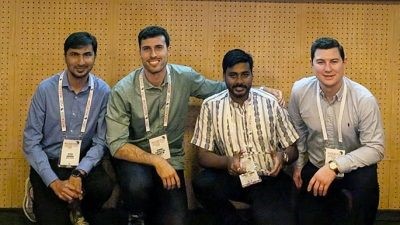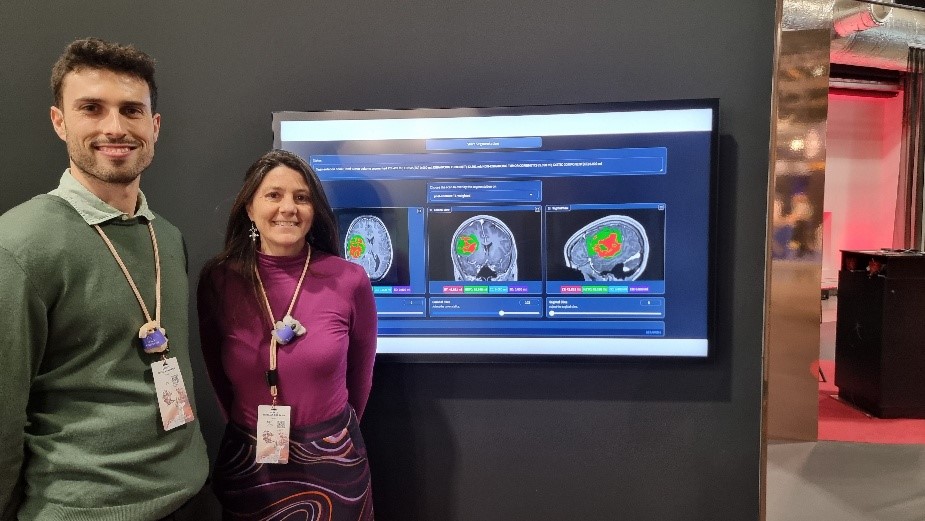UPM is driving an AI project for brain tumour detection

Gliomas, highly lethal brain tumours, pose a significant challenge for diagnosis, particularly in regions with limited resources. In response to this global issue, scientists from various parts of the world gathered in the city of Marrakech, Morocco, to compete in developing AI- and MRI-based solutions for the accurate detection and measurement of these tumours.
The project, a result of collaboration between the Biomedical Imaging Technologies laboratory, led by Dr María Jesús Ledesma Carbayo, Professor at UPM and affiliated with CIBER-BBN, and a research group from Children’s National Hospital in Washington, DC, led by Dr Marius George Linguraru, has succeeded in adapting cutting-edge technologies to settings with less developed medical infrastructure.

Part of the team at the competition presentation at MICCAI 2024. From left to right: Syed M. Anwar, Daniel Capellan Martin, Abhijeet Parida, and Austin Tapp.
The research focused on ensemble techniques for deep learning models, trained using transfer learning — a method that allows AI models to be trained with large datasets (in this case, of other types of brain tumours) and then fine-tuned to perform effectively with more limited data for the target task. This strategy, which also incorporated adaptive post-processing techniques capable of refining each case more individually, proved particularly effective when applied to specific data from the Sub-Saharan population, a task in which the team secured first place.
Daniel Capellán Martín, a researcher at UPM and co-first author of the study, emphasised: “Our innovative approach combines advanced deep learning techniques with adaptive strategies, enabling more precise and personalised detection of gliomas.” He added, “This achievement demonstrates the potential of AI to improve the diagnosis and treatment of brain tumours, especially in regions with limited resources.”
The methodology developed by the UPM team achieved outstanding levels of accuracy, earning them recognition at the BraTS Challenge 2024, held during the International MICCAI 2024 Conference in Marrakech, Morocco — a world-renowned event in AI applied to medical imaging.
“Our approach not only improves tumour detection in specific cohorts but also demonstrates the versatility of AI to adapt to diverse geographical settings, a crucial aspect for the global implementation of effective diagnostic technologies,” stated María Jesús Ledesma Carbayo.

Daniel Capellán Martín and María Jesús Ledesma Carbayo during the demonstration of the technologies developed for paediatric tumour segmentation at ECR 2025, Vienna, Austria.
In order to promote collective scientific progress, we have decided to publicly share our winning algorithm,” explained Dr Marius George Linguraru, who also served as Scientific Programme Chair for the MICCAI 2024 conference. “These competitions are crucial in demonstrating how innovation and collaboration can help reduce disparities in healthcare worldwide.”
Distinguished track record of excellence
This achievement adds to a series of previous successes by researchers from UPM and Children’s National Hospital in the field of AI and advanced medical imaging. In 2023, this team had already secured first place in the BraTS competition with a project focused on measuring paediatric brain tumours during the MICCAI 2023 Conference held in Vancouver, Canada, which was also selected for demonstration at the European Congress of Radiology (ECR 2025) this month in Vienna, Austria. The recent success at the BraTS Challenge and this forthcoming presentation at ECR 2025 broaden the scope of their expertise, from the detection and monitoring of tumours in paediatric populations to the detection of gliomas in adults from Sub-Saharan populations — a significant advance for healthcare in resource-limited re

“These recognitions underscore the pioneering role of our research in applying AI for beneficial purposes,” stated Ledesma Carbayo. “Our aim is to continue expanding our knowledge in advanced imaging, brain tumours, and AI to revolutionise the processes of diagnosis, measurement, and treatment of malignant tumours on a global scale.”
Currently, the team is exploring new national collaborations to evaluate these developed solutions on new cohorts and patient data with various tumour-related brain lesions. One of these lines focuses on the application of these algorithms for the segmentation and characterisation of brain metastases from different types of cancer, as well as glioblastoma.
This research has been made possible thanks to the support of the European Union, NextGenerationEU funds, the Spanish Ministry of Science, Innovation and Universities, and the Community of Madrid through the IMAGINA, RESPONSE-POC, EUCAIM, and MAGERIT-CM projects.
Bibliographic reference:
Capellán-Martín, D. et al. (2024). Model Ensemble for Brain Tumor Segmentation in Magnetic Resonance Imaging. In: Brain Tumor Segmentation, and Cross-Modality Domain Adaptation for Medical Image Segmentation. crossMoDA BraTS-2023. Lecture Notes in Computer Science, vol 14669. Springer, Cham. https://doi.org/10.1007/978-3-031-76163-8_20
Parida, A., Capellán-Martín, D., Jiang, Z., Tapp, A., Liu, X., Anwar, S. M., … & Linguraru, M. G. (2024). Adult Glioma Segmentation in Sub-Saharan Africa using Transfer Learning on Stratified Finetuning Data. arXiv preprint arXiv:2412.04111.
https://segmenter.hope4kids.io
Source: UPM, Research news: https://short.upm.es/czkk8, Originally published at its source on 10 March 2025.
Share this:
Latest news



Categories

